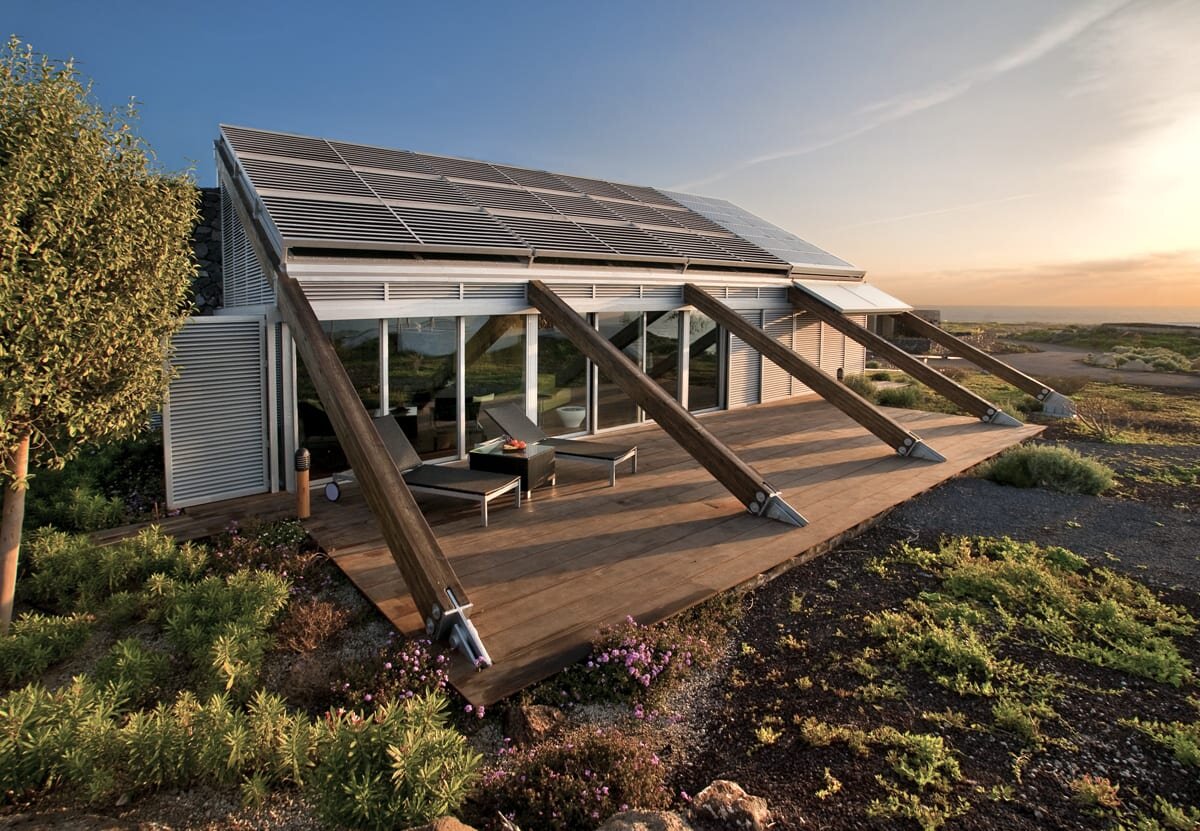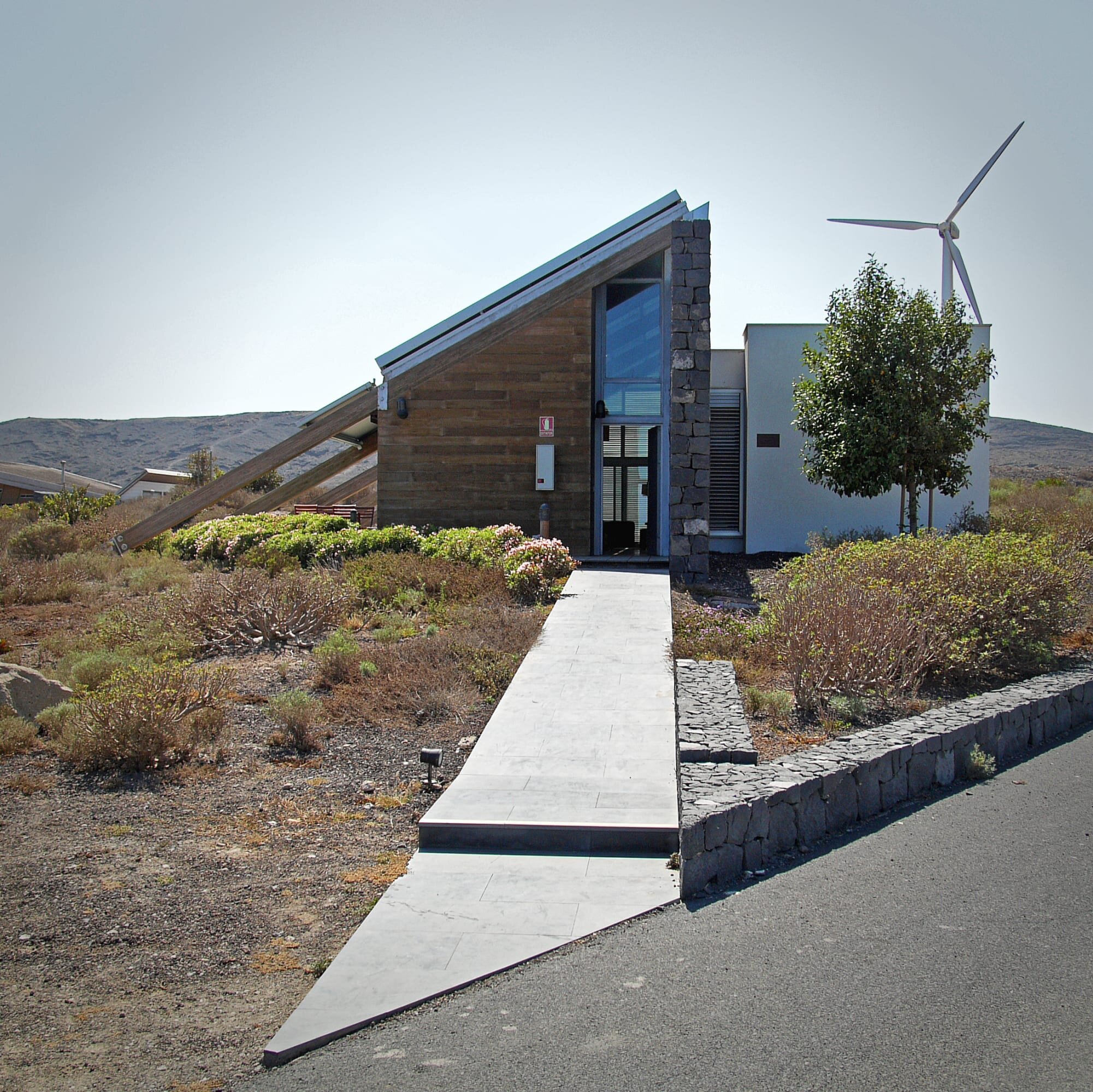Houses in ancient Greece had to contend more or less with the problems that ours have today, especially with heat and cold. But let us see what the ancient Greeks wisely did.
Bioclimatic architecture is nothing new, Energy Efficiency has always been a top topic, with perhaps the most characteristic reference being that of Socrates' Solar House.
Socrates’ sun-tempered house
Socrates in 470 BC with his instructions for the ideal solar house, mentioned in the Memoirs of Xenophon, but also Hippocrates with his work "On Air, Water and Places", laid the foundations of modern bioclimatic architecture. Their main goal was that houses ensure a harmonious relationship between man and the environment.
Modern bioclimatic house:
The ancient house had stone for foundations and wall bases, on which bricks with dry ties were laid to raise the walls. The roofs had tiles, although the existence of a roof is often mentioned. The plan given by ancient writers for the houses of this period records a narrow entrance leading to a four-sided courtyard, in the center of which was a well. There was also an altar in the courtyard where all religious ceremonies took place.
The north wall was thicker and had the fewest openings. The entrance was usually on the east side and rarely on the south side. On the north side of the house, some evergreen trees were usually planted, such as olive trees, so that their foliage would prevent the cold winter north wind from falling directly on the house. On the south side, there were usually deciduous trees which, without foliage, did not prevent the sun from warming the house in winter, but offered shade in summer.
The ancient Greeks did not stop at using plants for air conditioning. They used a carefully designed roof extension over the south doors and windows. The size of this extension was calculated to prevent the sun from falling inside the house in summer, but in winter, when it has a lower orbit, this extension did not prevent it from heating the inside of the house. Another clever alternative was to use an arbor of a certain height and width. They achieved almost the same results and ate grapes.
Of course, as you can see to this day in most traditional Greek houses, the color remains white! This is mostly found on sunny islands and serves to minimize the heat of the sun.
According to Vitruvius, the ancient Greek house was divided into a private and an official part. The official part of the house was called Andronitis/Andron(for men) and the private Gynaikonitis/Gynaeceum(for women), without being used exclusively by women, but being a place where the whole family spent their day.
Ancient Greek house
Andrōn or andronitis, is part of a Greek house that is reserved for men
As for the type of ancient residence, despite the differences that existed from place to place, ancient Greek houses had some basic elements in common. Relevant sources of information for us today are the districts of Delos, Priene, Olynthos, and also of Pella, which have come to light, whose houses cover a long period of time and have as their main structural element the characteristic courtyard, the atrium, the open inner core. We get interesting information about this from ancient literature, even if the authors only occasionally refer to the private life and living of the time.
The typical structure of ancient houses from the earliest to the later examples, the first relevant examples being the Minoan palaces, concerns mainly the core of the central courtyard, the patio, around which the house develops. The ancient Greek house predominantly exhausts all the possibilities of luxury in the interior, while the exterior remains simple and unadorned with small openings for light. As a result, the houses of the rich were not outwardly different from the houses of the common people. The courtyard was the center of family life, without a garden, usually covered with stones or mosaics, and served as the main source of ventilation and lighting for the house. Inside the courtyard was often the well and always the altar - sometimes made of marble - for the performance of domestic worship.
The presence of a second floor in the houses of the classical period is attested by the texts and the archeological relics. In Olynthos it is not certain whether the second floor covered one or more parts of the house, while in Delos it usually covered all parts. In the house of the Rapture of Eleni and in the house of Dionysus from Pella it covered only the north part, a fact interpreted by the corresponding village of Xenophon. The passage to the upper floor was made through the courtyard, with roofless wooden or internal stairs.
This model is the House of the Tiled Prothyon, a broadly higher class home (or Oikoi) of Olynthus:
In the house, there were rooms for daily use, bedrooms, pantries, a room for cooking, perhaps a shop with its own entrance from the street, but also gymnasiums and baths in luxurious houses mentioned by the ancient writers. The house usually faced south, a practice described by Xenophon and Aristotle, which allowed the courtyard, northern rooms, and upper floor to make the most of natural light in winter and avoid it in summer when the sun was very high.














